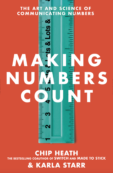What, exactly, is William J. Broad trying to say in this NYT piece? The gist seems to be: Scientists are disputing the alarmist claims of Al Gore’s global-warming movie An Inconvenient Truth! Except for the many world-class scientists who, er, strongly support it. And except for the many others who might quibble at the edges but basically think he got it right. (Let’s remember, folks, we’re talking about a movie, not a Ph.D program.) Follow that?
There is a kind of willful blindness displayed in this piece. The core message of Gore’s movie is: Global warming is real, and it’s time to take it seriously. Which is something Gore has been saying for years, and which the overwhelming majority of scientists now agree with. That’s an important message — it could well turn out to be THE critical message of the 21st century — and it was well communicated in the movie by Gore. (To be fair, in support of the skeptical view, Broad points out that there were only FIVE hurricanes in the Atlantic season this year — not the NINE predicted! Take that, Science!)
Unfortunately, repeating what might be the critical message of the 21st century is not “news.” “News” is finding a couple of random people, such as the article’s guest star Don Easterbrook, a geologist at Western Washington University, who argues with some of the movie’s points. And “newsiness” further requires Broad to bolster up these stray arguments into the illusion of a backlash against Gore.
(Side note: No doubt it will come as a Genuine Shocker to anyone who has followed the global-warming debate that one of the critics quoted is none other than Bjorn Lomborg, who has made a career out of being The Scientist that you quote when you want a global warming skeptic who can put a few statistical-sounding sentences together. Quoting Lomborg as a scientist on global warming is kind of like quoting Joe Lieberman as a Democrat on Iraq.)
The ugliest line in the article is this: “Mr. Gore, citing no particular time frame, envisions rises of up to 20 feet and depicts parts of New York, Florida and other heavily populated areas as sinking beneath the waves, implying, at least visually, that inundation is imminent.”
Implying … that inundation is imminent. (At least visually!) No one who has seen the movie will find this line credible. But the exaggeration (and others like it in the article) makes you wonder whether Broad’s piece isn’t simply an op/ed in news clothing.



